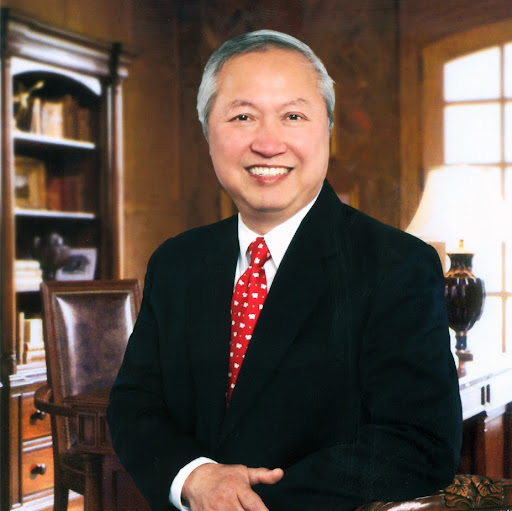Ted M Lin
age ~46
from Arlington, MA
- Also known as:
-
- Lin M Ted
Ted Lin Phones & Addresses
- Arlington, MA
- 20 Howard St, Ayer, MA 01432 • (413)6877027
- Worcester, MA
- 7 Uhlman Dr, Westborough, MA 01581 • (508)8989996
- Pleasant Valley, NY
- Wappingers Falls, NY
- Pittsburgh, PA
- Harvard, MA
- Wallkill, NY
- 7 Uhlman Dr, Westborough, MA 01581 • (508)3532954
Work
-
Company:Lin
-
Address:202 Chelsea Cay - Wappingers Falls, Wallkill, NY 12589
-
Phones:(845)8383223
-
Position:President
-
Industries:Bottled and Canned Soft Drinks and Carbonated Waters
Specialities
Civil Law • Criminal Law • Litigation • Financial Law • Cross-Strait Investment • Commercial Law • Licensing
Isbn (Books And Publications)

Medicine Doctors

Ted T. Lin
view sourceSpecialties:
Anesthesiology
Work:
Interventional Pain Specialists
5010 Crenshaw Rd STE 130, Pasadena, TX 77505
(281)9912200 (phone), (281)9917700 (fax)
5010 Crenshaw Rd STE 130, Pasadena, TX 77505
(281)9912200 (phone), (281)9917700 (fax)
Education:
Medical School
University of Texas Medical Branch at Galveston
Graduated: 2008
University of Texas Medical Branch at Galveston
Graduated: 2008
Languages:
English
Spanish
Spanish
Description:
Dr. Lin graduated from the University of Texas Medical Branch at Galveston in 2008. He works in Pasadena, TX and specializes in Anesthesiology. Dr. Lin is affiliated with Clear Lake Regional Medical Center and Kindred Hospital Bay Area.

Ted Kai-I Lin
view sourceSpecialties:
Family Medicine
Sports Medicine
Sports Medicine
Education:
Georgetown University (2002)

Ted Sun Lin
view sourceSpecialties:
Obstetrics & Gynecology
Education:
Kaohsiung Medical University (1967)

Ted Lin
view sourceSpecialties:
Anesthesiology
Pain Medicine
Pain Medicine
Pain Medicine
Pain Medicine
Education:
The University of Texas at Galveston (2008)
Name / Title
Company / Classification
Phones & Addresses
President
Lin
Bottled and Canned Soft Drinks and Carbonated...
Bottled and Canned Soft Drinks and Carbonated...
202 Chelsea Cay - Wappingers Falls, Wallkill, NY 12589
Principal
Lin Construction
Single-Family House Construction
Single-Family House Construction
11 Rosemont St, Malden, MA 02148
Us Patents
-
Audio Playback Adjustment
view source -
US Patent:20220365744, Nov 17, 2022
-
Filed:Aug 1, 2022
-
Appl. No.:17/878697
-
Inventors:- Santa Barbara CA, US
Ted Lin - Ayer MA, US
Jim Dolan - Boston MA, US -
International Classification:G06F 3/16
G11B 27/00
H04N 21/433
G11B 27/11
H04N 21/436
H04N 21/81
H04N 21/8547
G10L 19/018
H04R 29/00 -
Abstract:A first playback device is configured to (i) place audio frames representative of audio content in a buffer, each frame including respective playback timing information identifying a time to play back the audio frame, (ii) transmit the audio frames in the buffer to a second playback device, (iii) receive a command to adjust playback of the audio content, (iv) based on the command, identify a range of audio frames previously transmitted, (v) select a new start time for the range of audio frames, (vi) cause the second playback device to update the playback timing information for each audio frame in the range based on the new start time, (vii) update, in the buffer, the playback timing information for each audio frame in the range based on the new start time, and (viii) play back the audio content in synchrony with the second playback device based on the updated playback timing information.
-
Audio Encryption In A Media Playback System
view source -
US Patent:20220358187, Nov 10, 2022
-
Filed:May 10, 2022
-
Appl. No.:17/741083
-
Inventors:- Santa Barbara CA, US
Ted Lin - Ayer MA, US
Derek W. Erdmann - Duvall WA, US -
International Classification:G06F 21/10
G06F 21/60
H04N 21/233
H04N 21/439 -
Abstract:A first playback device is configured to obtain audio content from a cloud-based media service, the audio content encrypted according to a first encryption scheme. The first playback device is configured to communicate with a cloud-based license service to obtain information for decrypting the audio content and use the obtained information to decrypt the audio content. The first playback device is also configured to re-encrypt the decrypted audio content in accordance with a second encryption scheme and transmit the re-encrypted audio content to at least a second playback device that is grouped with the first playback device for synchronous audio playback. The first playback device is also configured to play back the audio content in synchrony with playback of the audio content by the second playback device.
-
Arbitration-Based Voice Recognition
view source -
US Patent:20220351725, Nov 3, 2022
-
Filed:Apr 18, 2022
-
Appl. No.:17/722438
-
Inventors:- Santa Barbara CA, US
Ted Lin - Ayer MA, US -
International Classification:G10L 15/22
G06F 3/16
G10L 15/32 -
Abstract:A first network microphone device (NMD) is configured to receive, from a second NMD, a first arbitration message including (i) a first measure of confidence associated with a voice input as detected by the second NMD and (ii) the voice input as detected by the second NMD, and receive, from a third NMD, a second arbitration message including (i) a second measure of confidence associated with the voice input as detected by the third NMD and (ii) the voice input as detected by the third NMD. The first NMD is configured to determine that the second measure of confidence is greater than the first measure of confidence and based on the determination, perform voice recognition based on the voice input as detected by the third NMD, where the voice input includes a command to control audio playback by the first, second, and/or third NMD, and after performing voice recognition, executing the command.
-
Distributed Synchronization
view source -
US Patent:20220326908, Oct 13, 2022
-
Filed:Jun 29, 2022
-
Appl. No.:17/853654
-
Inventors:- Santa Barbara CA, US
Ted M. Lin - Cambridge MA, US -
International Classification:G06F 3/16
-
Abstract:Disclosed herein are playback devices, groups of playback devices, and methods of operating playback devices and groupings thereof to cause the playback devices in a group of playback devices to play audio content together in synchrony based on playback timing and clock timing, where the audio content and playback timing and the clock timing for use with playing the audio content according to the clock timing are provided by different playback devices in the group of playback devices.
-
Updating Network Configuration Parameters
view source -
US Patent:20220286356, Sep 8, 2022
-
Filed:Mar 7, 2022
-
Appl. No.:17/688431
-
Inventors:- Santa Barbara CA, US
Ted Lin - Ayer MA, US
Jeffrey M. Peters - Cambridge MA, US
Cameron Scott - Seattle WA, US
James Babu - Seattle WA, US
Andi Rusu - Seattle WA, US
Bryan Cox - Edmonds WA, US -
International Classification:H04L 41/0813
H04L 41/08
H04W 12/50
H04W 12/102 -
Abstract:An example computing device is configured to (i) establish a connection to a secure wireless network (ii) determine that one or more playback devices of a media playback system are not connected to the secure wireless network (iii) receive, via a graphical display, a user input indicating a request to update the one or more playback devices with network configuration parameters for the secure wireless network, (iv) retrieve, from storage, a list of the one or more playback devices, (v) receive an input indicating a first playback device to be updated from the list, (vi) establish an initial communication path with the first playback device, (vii) transmit a set of one or more messages to the first computing device collectively comprising the network configuration parameters for the secure wireless network, and (viii) receive an indication that the first computing device has established a connection to the secure wireless network.
-
Synchronization Of Content Between Networked Devices
view source -
US Patent:20220264498, Aug 18, 2022
-
Filed:May 2, 2022
-
Appl. No.:17/734804
-
Inventors:- Santa Barbara CA, US
Thomas Higdon - Boston MA, US
Ted Lin - Ayer MA, US
Andrej Sarkic - Cambridge MA, US -
International Classification:H04W 56/00
H04L 65/60
H04L 43/106
H04N 21/436
H04N 21/439
H04N 21/81
H04R 27/00
H04N 21/43 -
Abstract:A control device of media playback system receives a user command to initiate playback of video content and associated audio content and transmits a BLUETOOTH message based on the command to a video playback device. The video playback device receives the BLUETOOTH message, obtains the media content via a local area network (LAN), and determines an indication of when to begin playback of the media content. The video playback device transmits the indication to an audio playback device via the LAN and outputs the video content in lip-synchrony with playback of the corresponding audio content by the audio playback device. While outputting the video content in lip-synchrony with playback of the corresponding audio content by the audio playback device, the video playback device transmits timing information via the LAN to the audio playback device to maintain lip-synchrony with playback of the corresponding audio content by the audio playback device.
-
Network Topology Based On A Useful Wired Connection
view source -
US Patent:20210337028, Oct 28, 2021
-
Filed:May 10, 2021
-
Appl. No.:17/316334
-
Inventors:- Santa Barbara CA, US
Nicholas A.J. Millington - Santa Barbara CA, US
Jose Graziani - Shrewsbury MA, US
Ted Lin - Ayer MA, US -
International Classification:H04L 29/08
H04L 12/28
H04N 21/436
H04L 12/24 -
Abstract:A computing device may broadcast a first message via a wireless interface while operating according to a first network topology. After broadcasting the first message, the computing device may receive the first message via a wired interface. Based on receiving the first message via the wired interface, the computing device may broadcast a second message indicating a second network topology via the wireless interface. Based on receiving the first message via the wired interface, the computing device may operate according to the second network topology.
-
Fast-Resume Audio Playback
view source -
US Patent:20210311698, Oct 7, 2021
-
Filed:Jun 21, 2021
-
Appl. No.:17/353182
-
Inventors:- Santa Barbara CA, US
Ted Lin - Ayer MA, US
Jim Dolan - Boston MA, US -
International Classification:G06F 3/16
G11B 27/00
H04N 21/433
G11B 27/11
H04N 21/436
H04N 21/81
H04N 21/8547
G10L 19/018
H04R 29/00 -
Abstract:A first zone player engages in synchronous playback of given audio content by obtaining the given audio content, generating and placing representative audio frames into a buffer, and transmitting the audio frames to a second zone player to play the given audio content in synchrony with the second zone player. After receiving a command to pause the synchronous playback, the first zone player prepares for a fast-resume by identifying a location in the given audio content and retaining some of the audio frames in the buffer for use during the fast-resume. The first zone player then initiates the fast-resume by determining a future resume time, transmitting an instruction to the second zone player to resume playback at the future resume time, and at the future resume time, resuming use of the audio frames in the buffer, starting at the identified location, to play the given audio content in synchrony.
Lawyers & Attorneys

Ted Lin - Lawyer
view sourceOffice:
Tsai, Lee & Chen
Specialties:
Civil Law
Criminal Law
Litigation
Financial Law
Cross-Strait Investment
Commercial Law
Licensing
Criminal Law
Litigation
Financial Law
Cross-Strait Investment
Commercial Law
Licensing
ISLN:
917997509
Law School:
National Taipei University, LL.B., 1996; Southwest University of Political Science and Law, LL.M., 2004
Resumes

Pianist, Music Instructor
view sourceWork:
Evangelical Formosan Church of Cerritos
Pianist, Music Instructor
Pianist, Music Instructor
Skills:
Orchestration
Music Theory
Music Education
Music
Composition
Music Theory
Music Education
Music
Composition

Distinguished Engineer
view sourceLocation:
Ayer, MA
Industry:
Computer Software
Work:
Sonos, Inc.
Distinguished Engineer
Marathon Technologies May 2007 - Sep 2011
Senior Software Engineer
Sonos, Inc. May 2007 - Sep 2011
Principal Software Engineer
Ibm Aug 2001 - May 2007
Staff Software Engineer
Carnegie Mellon University Jan 2001 - May 2001
Teaching Assistant
Distinguished Engineer
Marathon Technologies May 2007 - Sep 2011
Senior Software Engineer
Sonos, Inc. May 2007 - Sep 2011
Principal Software Engineer
Ibm Aug 2001 - May 2007
Staff Software Engineer
Carnegie Mellon University Jan 2001 - May 2001
Teaching Assistant
Education:
Stanford University 2004 - 2008
Master of Science, Masters, Computer Science Carnegie Mellon University 1997 - 2001
Bachelors, Bachelor of Science, Computer Science, Computer Engineering
Master of Science, Masters, Computer Science Carnegie Mellon University 1997 - 2001
Bachelors, Bachelor of Science, Computer Science, Computer Engineering
Skills:
Linux
Python
Software Engineering
Virtualization
Xml
Test Automation
Perl
High Availability
Operating Systems
Linux Development
C/C++
Javascript
Ocaml
Architecture
Device Drivers
Subversion
Testing
Software Development
C
Python
Software Engineering
Virtualization
Xml
Test Automation
Perl
High Availability
Operating Systems
Linux Development
C/C++
Javascript
Ocaml
Architecture
Device Drivers
Subversion
Testing
Software Development
C
Interests:
New Technologies
Linux
3D Printing
Linux
3D Printing

Ted Lin
view sourceMyspace
Googleplus

Ted Lin
Work:
Lin Engineering - President
Education:
Tsinghua University - Physics, Northen Illionis University - Physics

Ted Lin
Work:
Hewlett-Packard
Education:
University of Cape Town
Tagline:
This is Ted

Ted Lin

Ted Lin
Work:
One Kings Lane - Front End Engineer (2011)

Ted Lin
Work:
LynnTechno

Ted Lin
Education:
Columbia University - International affairs

Ted Lin

Ted Lin
Flickr
Plaxo

Ted Lin
view sourceLin Engineering

Ted Lin
view sourcePM at Behavior Tech Computer
Classmates

Ted Lin
view sourceSchools:
American International School of Lagos Lagos Nigeria 1992-1997

University of Southern Ca...
view sourceGraduates:
Rachael Waller (1998-2004),
Ted Lin (2002-2005),
Candy Klomann (1963-1966),
Michelle Boynton (2001-2005)
Ted Lin (2002-2005),
Candy Klomann (1963-1966),
Michelle Boynton (2001-2005)

American International Sc...
view sourceGraduates:
Ted Lin (1992-1997),
Daniel Blackmon (1977-1981),
Salem Abou Hassan (1992-1995),
Beverley Mbu (1999-2000),
Gwyn Wolters (1971-1975)
Daniel Blackmon (1977-1981),
Salem Abou Hassan (1992-1995),
Beverley Mbu (1999-2000),
Gwyn Wolters (1971-1975)
Youtube

Ted Lin
view source
Ted M Lin
view source
Ted Lin
view source
Ted Lin
view source
Ted Lin
view source
Ted Lin
view source
Ted Lin
view source
Ted Lin
view sourceGet Report for Ted M Lin from Arlington, MA, age ~46













